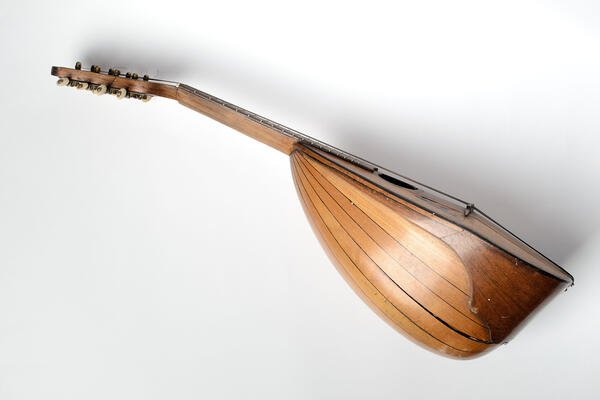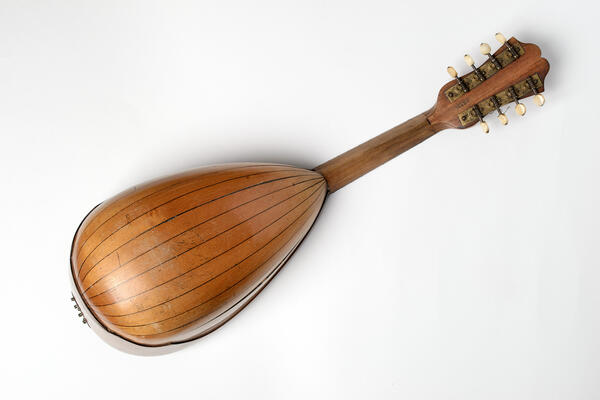The displayed mandolin was donated to the museum in 1991. It is a small, plucked string instrument, a type of soprano lute with a shorter neck and fewer strings. The strings are usually plucked with a plectrum, often called a pick, and sometimes also with the fingers or with a quill.
Performers often use tremolo — rapid picking of the same note or rapid alternation between two notes, intervals, or chords. Since the mandolin’s metal strings decay to silence rather than sound out, tremolo can also be used to create sustained notes. The mandolin is used as a solo, ensemble, and orchestral instrument.
The mandolin appeared in Italy and in the 17th century became the most widespread and popular instrument in folk music. Recently, the Italian mandolin has experienced a revival of interest. Such interest is caused not only and not so much by its popularity in the folk music of the Celts, Italians, and, strangely enough, Americans, but by the instrument’s versatile sound.
While in the past unforgettable tremolos could only be heard in serenades, symphony orchestras, and operas, over time mandolin harmonies found their way into rock music. The mandolin has been used by such artists as Sir Paul McCartney, The Doors, and Led Zeppelin.
The mandolin was supposedly brought to the Russian Empire in the first half of the 18th century. The famous Russian writer Vladimir Dal described the mandolin in his “Explanatory Dictionary of the Russian Language” in the following way,



